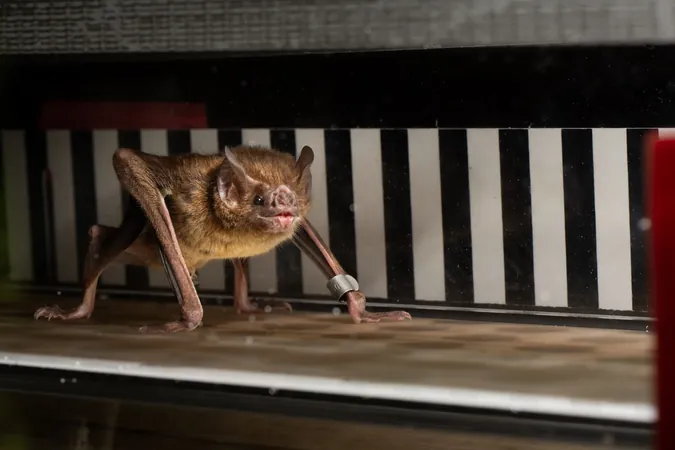
Vampire Bats: The Surprising Metabolic Powerhouses Revealed!
2024-11-06
Author: Mei
Introduction
In a groundbreaking study at the University of Toronto, researchers Giulia Rossi and Kenneth Welch have uncovered fascinating similarities between the metabolism of vampire bats and that of blood-sucking insects. Their research, featured in the prestigious journal Biology Letters, highlights how these notorious nocturnal creatures can efficiently burn amino acids as a fuel source, a trait typically seen in insects like tsetse flies.
Unique Dietary Adaptation
Traditionally, vertebrates, including most mammals, have relied on carbohydrates for energy. Vampire bats are a remarkable exception; their unique diet primarily consists of the blood of other animals. This raises the question: how can they thrive on such a seemingly simplistic diet? To find the answer, Rossi and Welch brought several vampire bats into their lab, creating a controlled environment for metabolic evaluation.
Innovative Research Methodology
Measuring the metabolism of flying creatures poses significant challenges due to the weight and influence of traditional sensors. Instead of using cumbersome devices, the researchers ingeniously constructed a small treadmill encased in a box, encouraging the bats to walk, which aligns with their natural behavior of tracking prey on the ground.
Metabolic Rate Assessment
To assess the bats’ metabolic rates, the biologists equipped the treadmill with sophisticated sensors to measure oxygen intake and carbon dioxide output. They conducted experiments with 24 vampire bats, providing them with a diet of cow's blood enriched with amino acids and tagged carbon atoms. Astonishingly, as the bats were coaxed to run at speeds of up to 30 meters per minute, the sensors detected a significant utilization of amino acids as the primary energy source.
Implications of the Research
The implications of this research extend beyond mere curiosity. The eating habits of vampire bats are fraught with risks; unlike carbohydrates, amino acids cannot be stored for later use. Consequently, these bats must feast daily on their blood meals to avoid starvation—a fact that underscores the incredible pressure faced by vampire bats in their natural habitat.
Conclusion
This study could open new avenues in understanding the evolutionary adaptations of vampire bats and inspire further research into metabolic processes across diverse species. As we learn more about these fascinating creatures, we might uncover even more secrets that will reshape our knowledge of mammalian biology and adaptations. Stay tuned, because the world of vampire bats is about to get even more intriguing!

 Brasil (PT)
Brasil (PT)
 Canada (EN)
Canada (EN)
 Chile (ES)
Chile (ES)
 España (ES)
España (ES)
 France (FR)
France (FR)
 Hong Kong (EN)
Hong Kong (EN)
 Italia (IT)
Italia (IT)
 日本 (JA)
日本 (JA)
 Magyarország (HU)
Magyarország (HU)
 Norge (NO)
Norge (NO)
 Polska (PL)
Polska (PL)
 Schweiz (DE)
Schweiz (DE)
 Singapore (EN)
Singapore (EN)
 Sverige (SV)
Sverige (SV)
 Suomi (FI)
Suomi (FI)
 Türkiye (TR)
Türkiye (TR)